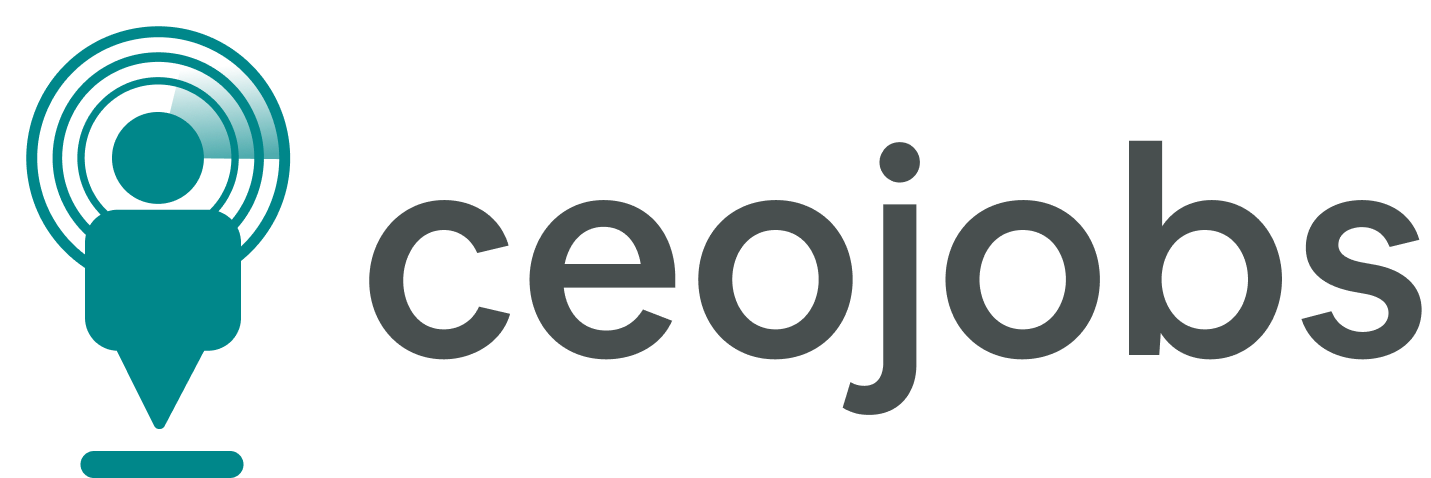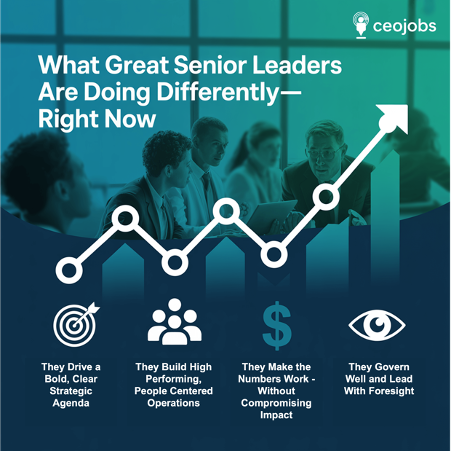𝗣𝗮𝗿𝘁 𝟭: 𝗖𝗮𝗽𝗮𝗯𝗹𝗲 𝗣𝗲𝗼𝗽𝗹𝗲 𝗶𝗻 𝗞𝗲𝘆 𝗣𝗼𝘀𝗶𝘁𝗶𝗼𝗻𝘀 – 𝗧𝗵𝗲 𝗣𝗲𝗿𝗳𝗼𝗿𝗺𝗮𝗻𝗰𝗲 𝗜𝗺𝗽𝗲𝗿𝗮𝘁𝗶𝘃𝗲
Popular Post
Tags

𝗣𝗮𝗿𝘁 𝟭: 𝗖𝗮𝗽𝗮𝗯𝗹𝗲 𝗣𝗲𝗼𝗽𝗹𝗲 𝗶𝗻 𝗞𝗲𝘆 𝗣𝗼𝘀𝗶𝘁𝗶𝗼𝗻𝘀 – 𝗧𝗵𝗲 𝗣𝗲𝗿𝗳𝗼𝗿𝗺𝗮𝗻𝗰𝗲 𝗜𝗺𝗽𝗲𝗿𝗮𝘁𝗶𝘃𝗲
Capable talent is not a nice-to-have — it’s a business essential.
For CEOs, COOs, Boards, and Fund Managers, the message is clear: if you're not placing the right people in the most critical roles, you're leaving performance on the table — and possibly risking much more.
The Stakes Are High
McKinsey’s research shows up to 70% of the variance in team engagement and performance can be traced to the quality of the manager or leader. Gallup’s data reinforces this. It's not just a theory — it's a measurable truth.
What happens when key positions are held by the wrong people?
The consequences can be enormous:
● Strategic Misalignment
● Bottlenecks in Growth
● Project Failures and Financial Waste
● Disengaged Teams
● Missed Opportunities and Innovation Stalls
● Leadership Instability
● Reputational Damage
● Loss of Credibility, Customers, and Talent
Every Board, executive team, and investor should see leadership capability not as a soft measure, but a performance driver.
What Makes a Position ‘Key’?
Prioritisation is critical, clearly not every role is ‘key’ and this will vary according to the organisation context, organisation's size, strategy, and stage. But at its core, a key position is one that has a disproportionate impact on the organisation's success, risk, or continuity. Below are a few examples
1. Critical to Strategy Execution - Roles directly responsible for executing core business strategies.
2. Leadership Roles with Span of Influence - People who shape culture, lead teams, and drive organisational performance.
3. High Risk if Vacant - If the role goes unfilled (or is poorly filled), the organisation faces major disruption.
4. Difficult to Replace - Specialised knowledge, relationships, or capabilities make it hard to find a quick or suitable replacement.
5. Customer- or Revenue-Critical - People who directly influence customer experience, client retention, or revenue generation.
6. Emerging or Future-Facing Roles - Positions aligned to future capability needs or innovation areas.
Capable Talent – More Than Competent
Each of us will have our thoughts on ‘Capable’ – here are our thoughts in this context. “Capable” means not just qualified, but high impact. Someone who is fit for the mission, ready for the challenges, and able to elevate others. The word capable goes far beyond just being qualified on paper. It means the person has the right mix of attributes to thrive in that specific role, in that specific context, at that moment in time.
Below are a few examples:
1. Competence - They have the technical skills, experience, and domain knowledge to perform the role at a high level.
2. Leadership Ability - They can influence, inspire, and guide others — whether they lead people directly or indirectly.
3. Judgment & Decision-Making - They consistently make sound decisions under pressure and ambiguity, balancing risk and opportunity.
4. Adaptability - They can pivot and adjust as the organisation evolves or faces change — strategic thinkers who aren’t stuck in one way of doing things.
5. Cultural Fit + Culture Shaper - They align with the company’s values but also enhance the culture through how they lead and behave.
6. Execution Power - They get things done. They move the needle. Not just thinkers — doers who deliver.
7. Collaboration & Influence - They work well cross-functionally, break down silos, and build trust across teams and stakeholders.
8. Growth Capacity - They can scale with the business. Capable today — and capable tomorrow. They have headroom to grow.
The Cost of Misplaced Talent
We mentioned above some of the potential costs of misplaced talent above, here we share a few of the obvious potential financial impacts:
Cost of a Mis-Hire – Estimates put a bad hire at 30%+ of their annual salary.
Revenue Loss – Customer-facing role underperformance hits the bottom line.
Project Delays and Failures – Wasted budget on missed milestones or rework.
Underutilised Resources – Talent, tools, and capital misaligned with organisational needs.
Recruitment and Replacement Costs – Time and money spent fixing talent mistakes.
How to Secure Capable Talent in Key Roles
Here’s a pragmatic five-step process:
● Identify Key Roles – Based on strategy, risk, and future capability.
● Create Success Profiles – Capture what excellence looks like in that role, now and in the future.
● Evaluate Talent Objectively – Compare people in those roles to the profile.
● Decide Boldly – Build, buy, borrow, or shift people based on evidence.
● Deliver with Intent – Implement talent changes with speed, sensitivity, and clarity.
Final Thought
You can’t scale strategy without capability.
You can’t win in market if your key roles are underpowered.
“Capable talent isn’t just a resource — it’s your most strategic lever.”
Stay tuned for Part 2: “Capable People in Key Positions – A Private Equity & Boardroom Lens”, where we explore how fund managers, NEDs and PE firms can treat talent as a value creation and risk mitigation lever across the portfolio.
Frequently Asked Questions
-
Q: 1. Why is capable talent considered a business essential and not just a nice-to-have?
A: Capable people in key roles drive strategic execution, engagement, innovation, and financial performance — without them, businesses risk stalling or failing altogether.
-
Q: 2. What are the biggest risks when key positions are filled by the wrong people?
A: Risks include strategic misalignment, bottlenecks in growth, disengaged teams, project failures, financial waste, leadership instability, and reputational damage.
-
Q: 3. How do you define a “key position” in an organisation?
A: A key position is one that has a disproportionate impact on an organisation’s success, risk exposure, or continuity — especially roles critical to strategy, leadership, customer outcomes, or future capabilities.
-
Q: 4. What qualities make someone truly "capable" — beyond just being competent?
A: Capability includes leadership ability, sound judgment, adaptability, cultural fit, execution power, collaboration skills, and the ability to grow with the business.
-
Q: 5. How costly is a mis-hire or misplaced leadership appointment?
A: A bad hire can cost 30% or more of their annual salary — plus additional losses from missed opportunities, disengagement, project failures, and customer attrition.
-
Q: 6. What’s the difference between evaluating someone based on competence versus capability?
A: Competence checks if they can do the job; capability assesses whether they can succeed, elevate others, and grow with the business in the role.
-
Q: 7. What steps should companies take to ensure capable people are in their key roles?
A: Follow a structured process: Identify key roles, Create success profiles, Objectively evaluate current talent, Make bold talent decisions, Deliver changes with speed and clarity.
-
Q: 8. How do vacant or poorly filled key roles affect organisational performance?
A: They cause major disruptions, delay strategy execution, create leadership vacuums, and expose the business to competitive, operational, and financial risks.
-
Q: 9. Can someone be capable today but not capable tomorrow?
A: Yes — capability must be dynamic. A person needs the ability to adapt and scale with the organisation as it grows or evolves.
-
Q: 10. Why should boards, CEOs, and investors treat leadership capability as a core performance driver?
A: Because leadership quality directly influences business outcomes — it's one of the highest-leverage factors for driving value creation, mitigating risk, and sustaining competitive advantage.
Post a Comment
Get New Job Notifications
Subscribe & get all related jobs notifications



.png)

Comments (1)
Larryadoth
Are you looking to increase your visibility on Instagram, TikTok, or other platforms? With Socpeak.fun, you can instantly boost your followers, likes, views, and more — safely and affordably. Why choose Socpeak.fun? • Fast delivery • Real & organic-looking growth • Custom packages based on your goals • Trusted by influencers, brands & startups • Emails Campaign… and a lot more ! Visit us now: http://www.socpeak.fun/ Start building your audience today — and get noticed. Got questions or want a custom offer? Just email us at info@socpeak.net — and ask about your free welcome gift!